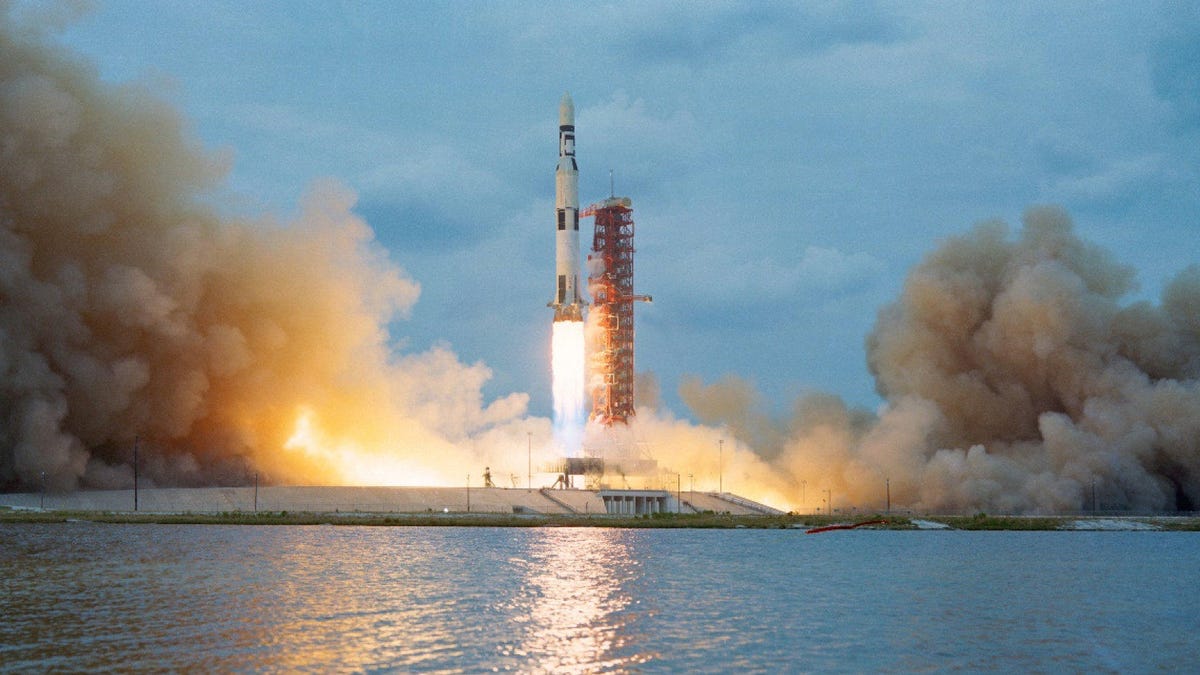NASA's Original Moon Rocket Was Powerful, but One Famous Claim Was Exaggerated
Some scientists aim to set the record straight ahead of the launch of NASA's biggest rocket ever next week.

Saturn V first flew in 1967 for the Apollo 4 mission. The last Saturn V took off in 1973 and ferried the Skylab space station into Earth orbit. This image shows the Skylab launch.
For all those out there keeping score when it comes to NASA Apollo-era gossip: Yes, the moon landing did happen, but no, the Saturn V rocket wasn't so loud that it melted concrete, and those sound waves didn't light grass on fire up to a mile away from the launch pad.
That's the finding of a new study published in the Journal of the Acoustical Society of America, which seeks to correct some of the myths that have circulated around the world in the internet era.
"The Saturn V has taken on this sort of legendary, apocryphal status," co-author Kent L. Gee, of Brigham Young University, said in a statement. "It was an opportunity to correct misinformation about this vehicle."
Data from the last century about the loudness of the huge rocket that carried astronauts to the moon is limited, so Gee and colleagues used a physics model to estimate that the launch's sound intensity would have been about 204 decibels. The engine on a commercial jetliner is about 120 to 160 decibels, but it's important to understand the scale involved to interpret this comparison.
"Decibels are logarithmic, so every 10 decibels is an order of magnitude increase," Gee said. "One hundred and seven decibels would be equivalent to 10 aircraft engines. Two hundred would be 10,000 engines."
That's certainly crazy loud, but not enough to "melt" concrete. In fact, the use of that word should be a big tip that this rumor hasn't been vetted by many scientists. Intense sound waves wouldn't melt concrete, but they could cause concrete to shatter. Same goes for the sound of the rocket lighting grass on fire somehow. Gee's team suggests that if there were grass fires in the vicinity of a Saturn V launch, it was more likely tied to the plume from the rocket engine or heated debris from the launch.
The correction to the cultural record comes as NASA prepares for the maiden voyage of its latest big rocket, the long-awaited Space Launch System. SLS is years overdue but currently set to launch the Artemis 1 mission from Florida on Monday; it will send an uncrewed Orion capsule around the moon.
SLS will be even more powerful than Saturn V and will probably produce a comparable amount of noise. Don't expect it to melt or shatter anything nearby, but if anyone were foolish enough to try to get right up next to the rocket at launch, it would shatter their eardrums instantly.
Always better to watch rockets from a distance, kids.

